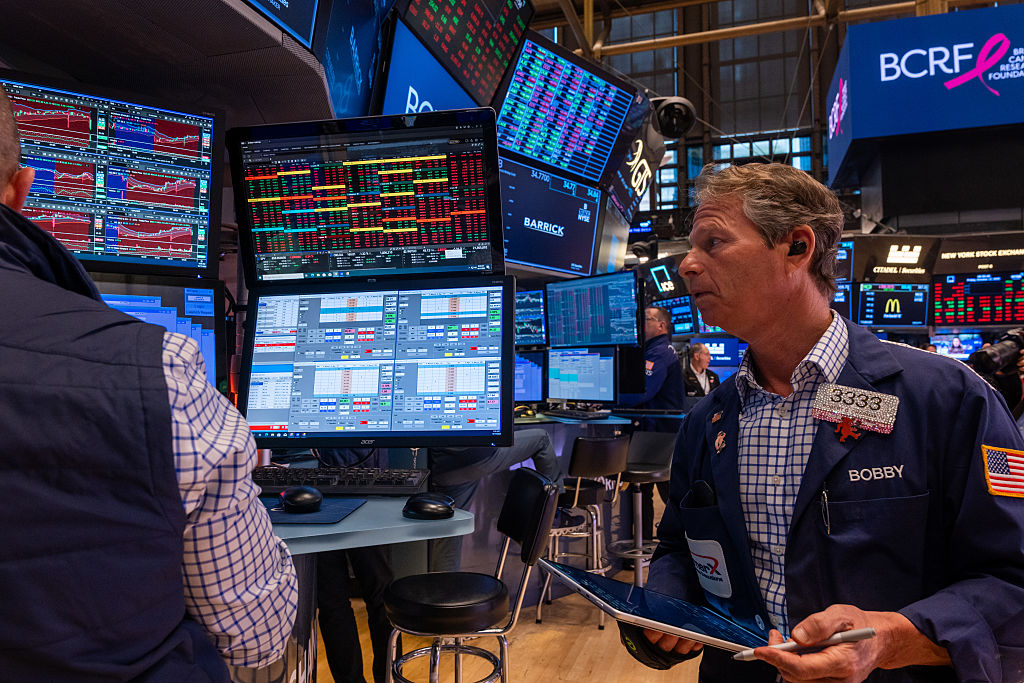The platinum price could double as demand takes off
Platinum has been disappointing to own, but with demand rising and supply drying up, the fundamentals are improving argues Dominic Frisby.


Platinum is up there close to silver for its propensity to disappoint. It has been wretched.
Yet last week the World Platinum Investment Council published its Platinum Quarterly (for the fourth quarter of 2022) and revised its forecast for 2022. It’s quite promising.
After two years of surpluses, the platinum market is forecast to move to a material deficit in 2023. The swing is considerable. There was a 776koz surplus in 2022. That will become a 556koz deficit in 2023. In other words a 24% increase in demand but just a 3% increase in supply. (Supply was down 12% in 2022).
MoneyWeek
Subscribe to MoneyWeek today and get your first six magazine issues absolutely FREE

Sign up to Money Morning
Don't miss the latest investment and personal finances news, market analysis, plus money-saving tips with our free twice-daily newsletter
Don't miss the latest investment and personal finances news, market analysis, plus money-saving tips with our free twice-daily newsletter
Where is the demand going to come from? The auto market (10% increase in demand); other industrial demand (12%), and investment demand is also forecast to increase.
Rising demand will help the platinum price
Global automotive demand is on the increase. We are not yet at pre-pandemic levels, but demand appears to be shrugging off issues arising from lockdowns in China, the war in Ukraine, chip shortages and cost-of-living concerns.
For platinum specifically, 2022 saw a 28% increase in hybrid vehicle manufacture, tighter emissions legislation in China (which means more platinum for heavy-duty diesel vehicles) and greater substitution of platinum for more expensive palladium (that won’t last as the palladium price has come down by 50% from its highs (ouch).
Industrial demand is largely coming from Japan and China, and from the glass industry. Jewellery demand from China is also forecast to increase as lockdowns ease.
The big eventual kahuna for platinum is the so-called hydrogen economy. Hydrogen would replace fossil fuels to deliver a nation's energy and services. Japan probably leads the way here, but we are not there yet.
“While hydrogen-related demand for platinum is relatively small in 2022 and 2023, hydrogen-related demand for platinum is expected to grow substantially through the rest of the decade and beyond, reaching as much as 35% of total yearly platinum demand by 2040,” says World Platinum Investment Council (WPIC) research director Edward Sterck tells me.
On the supply side, the issues are South Africa and Russia. The former has the perennial spectre of “operational challenges” and power supply risks looming over it, while the latter has been frozen out of much but not all of the global economy.
Keep an eye on supply
The big fish in the platinum pond is South Africa.
Roughly 75% of annual global supply comes from one region of South Africa – the Bushveld, three hours drive to the northwest of Johannesburg.
With this central point of failure, the market is vulnerable. Should something significant go wrong there – strikes, power supply failures, some kind of natural disaster, political disruption – the platinum market has big problems. Platinum longs will do very well.
Strikes and power failures were both catalysts in the 2000s when platinum enjoyed an epic run north of $2,200/oz. Today it sits at around $970. In these inflationary times, it is hard to find an asset so far off its highs. But when it comes to disappointment, platinum, like silver, can be relied on to deliver.
In our minds, platinum is more expensive than gold. That’s why platinum credit cards are of higher status than gold and why, in the world of album certification, platinum (one million units sold) ranks higher than gold (half a million units).
Platinum is rarer than gold, which is why it is more expensive. In 2008 it was more than double the gold price. The historical average is 1.25 times. With gold sitting at around $1,900/oz, you would expect the platinum price to be trading around $2,400. No such luck. It’s half the gold price.
The chief villain in platinum’s demise was the Volkswagen diesel scandal of late 2015 – when it emerged that diesel engines weren’t quite as clean as they were made out to be.
Demand for diesel vehicles fell, especially in Europe, exacerbated by unfavourable taxation and regulation. (Platinum’s main use is as a catalytic converter in diesel engines).
There is also the fact that, though precious, platinum is not a monetary metal, so the speculative, anti-inflation trade that buys gold, silver or crypto does not so much buy platinum.
Meanwhile, as far as jewellery is concerned, platinum is not as fashionable as it was 10 years ago – perhaps because it is worth less, ironically, and jewellery is a status symbol.
But jewellery demand appears now to be picking up, and the anti-diesel crash has now levelled off. The figures from the World Platinum Council suggest that, after many years of flatlining, the platinum story may be getting to roll once again. That said: the lesson of the last 15 years is to never underestimate platinum’s propensity to disappoint.
Three stories could drive the platinum price
There are three potential stories that could precipitate a dramatic change in platinum’s fate.
First, a change in attitude towards diesel. Second, the hydrogen economy takes off. Third, something goes wrong in South Africa. The ever-present third is the most likely.
Over the past year, platinum has ranged between $800 and $1,200. At the moment platinum is in the middle of that range, having displayed some impressive relative strength in the market volatility of the past few weeks.
Platinum’s doldrums may continue for the time being. But one day it will all look very obvious that everyone should have some platinum in their portfolio.
If you can pick platinum around or below $900, I can’t see how this goes wrong as a long-term investment – but, as I say, you may have to wait a while.
A return to ‘normal’ historical ratios between platinum and other metals could see it easily double.
This article was first published in MoneyWeek's magazine. Enjoy exclusive early access to news, opinion and analysis from our team of financial experts with a MoneyWeek subscription.
More from MoneyWeek:
Get the latest financial news, insights and expert analysis from our award-winning MoneyWeek team, to help you understand what really matters when it comes to your finances.
Dominic Frisby (“mercurially witty” – the Spectator) is as far as we know the world’s only financial writer and comedian. He is the author of the popular newsletter the Flying Frisby and is MoneyWeek’s main commentator on gold, commodities, currencies and cryptocurrencies. He has also taken several of his shows to the Edinburgh Festival Fringe.
His books are Daylight Robbery - How Tax Changed our Past and Will Shape our Future; Bitcoin: the Future of Money? and Life After the State - Why We Don't Need Government.
Dominic was educated at St Paul's School, Manchester University and the Webber-Douglas Academy Of Dramatic Art.
You can follow him on X @dominicfrisby
-
 Why Trustpilot is a stock to watch for e-commerce exposure
Why Trustpilot is a stock to watch for e-commerce exposureTrustpilot has built a defensible position in one of the most critical areas of the internet: the infrastructure of trust, says Jamie Ward
-
 Tetragon Financial: An investment trust with stellar returns
Tetragon Financial: An investment trust with stellar returnsTetragon Financial has performed very well, but it won't appeal to most investors – there are clear reasons for the huge discount, says Rupert Hargreaves
-
 Why Trustpilot is a stock to watch for exposure to the e-commerce market
Why Trustpilot is a stock to watch for exposure to the e-commerce marketTrustpilot has built a defensible position in one of the most critical areas of the internet: the infrastructure of trust, says Jamie Ward
-
 Tetragon Financial: An exotic investment trust producing stellar returns
Tetragon Financial: An exotic investment trust producing stellar returnsTetragon Financial has performed very well, but it won't appeal to most investors – there are clear reasons for the huge discount, says Rupert Hargreaves
-
 How to capitalise on the pessimism around Britain's stock market
How to capitalise on the pessimism around Britain's stock marketOpinion There was little in the Budget to prop up Britain's stock market, but opportunities are hiding in plain sight. Investors should take advantage while they can
-
 London claims victory in the Brexit wars
London claims victory in the Brexit warsOpinion JPMorgan Chase's decision to build a new headquarters in London is a huge vote of confidence and a sign that the City will remain Europe's key financial hub
-
 The consequences of the Autumn Budget – and what it means for the UK economy
The consequences of the Autumn Budget – and what it means for the UK economyOpinion A directionless and floundering government has ducked the hard choices at the Autumn Budget, says Simon Wilson
-
 Reinventing the high street – how to invest in the retailers driving the change
Reinventing the high street – how to invest in the retailers driving the changeThe high street brands that can make shopping and leisure an enjoyable experience will thrive, says Maryam Cockar
-
 8 of the best houses for sale with electric vehicle charging
8 of the best houses for sale with electric vehicle chargingThe best houses for sale with electric vehicle charging – from a converted World War II control tower in Scotland, to a Victorian country house in Cumbria
-
 Big Short investor Michael Burry closes hedge fund Scion Capital
Big Short investor Michael Burry closes hedge fund Scion CapitalProfile Michael Burry rightly bet against the US mortgage market before the 2008 crisis. Now he is worried about the AI boom
